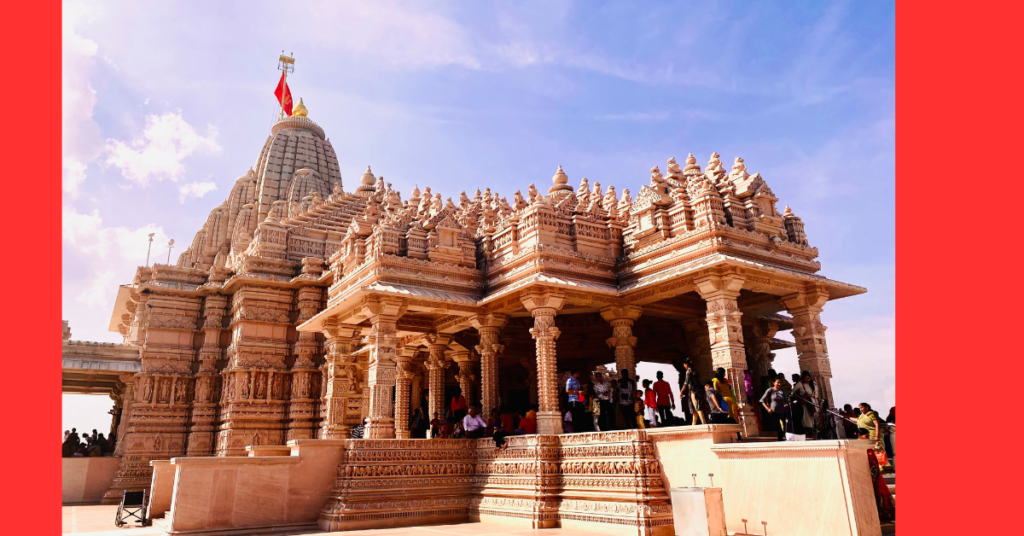Introduction to Jyotirlingas
The Jyotirlingas represent sacred manifestations of Lord Shiva, where ‘jyothi’ signifies radiance and ‘linga’ represents the iconic form of the divine. These sacred shrines are deeply woven into the fabric of Hindu spirituality and represent locations where Lord Shiva is believed to have appeared as an infinite pillar of light.
The Divine Origin
According to the Vishnu Purana, the origin of Jyotirlingas is tied to a profound debate between Lord Vishnu and Lord Shiva about supreme divinity. Lord Shiva manifested as an endless pillar of light, challenging both Brahma and Vishnu to find its extremities. While Vishnu acknowledged his inability to find the end, Brahma’s false claim led to a divine decree. Originally, there were 64 Jyotirlingas, but 12 are considered especially auspicious.
The Sacred Twelve: A Detailed Guide
1. Somnath Temple (Gujarat)
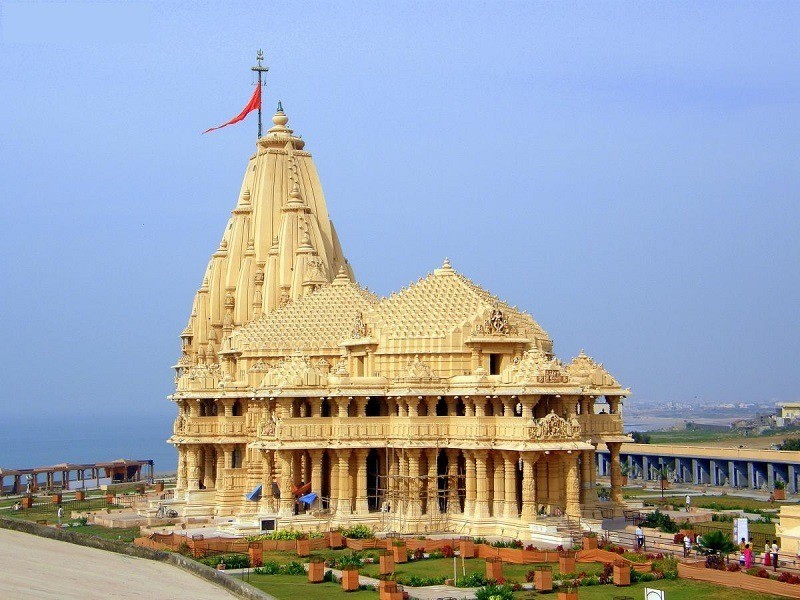
Location: Gir Somnath, Gujarat
Spiritual Significance: Regarded as the first among the twelve aadi jyotirlingas
Architectural Features:
- Chalukya-style architecture
- Rebuilt sixteen times, symbolizing resilience
- Magnificent coastal setting
Visitor Information:
- Hours: 6 AM – 9 PM daily
- Key Ceremonies:
- Morning Aarti: 7 AM
- Afternoon Aarti: 12 noon
- Evening Aarti: 7 PM
- Special Feature: ‘Joy Somnath’ light show (8-9 PM)
- Transportation: Accessible via Veraval Railway station (5 km)
Historical Story
The temple has a fascinating story involving the Moon God (Soma). According to legend, Soma married 27 daughters of Daksha Prajapati but showed excessive favoritism to Rohini. When the other wives complained, Daksha cursed Soma to wane. Distressed, Soma performed intense penance at this site, and Lord Shiva blessed him with the ability to wax and wane cyclically, rather than permanent decline.
Interesting Facts:
- The temple has been looted and destroyed 17 times but rebuilt each time
- The current structure was rebuilt in 1951 with support from Sardar Vallabhbhai Patel
- The temple’s shikhara (spire) features a 25-foot golden flag
- The temple walls contain magnets that help maintain the structural integrity
2. Mallikarjuna Temple (Andhra Pradesh)
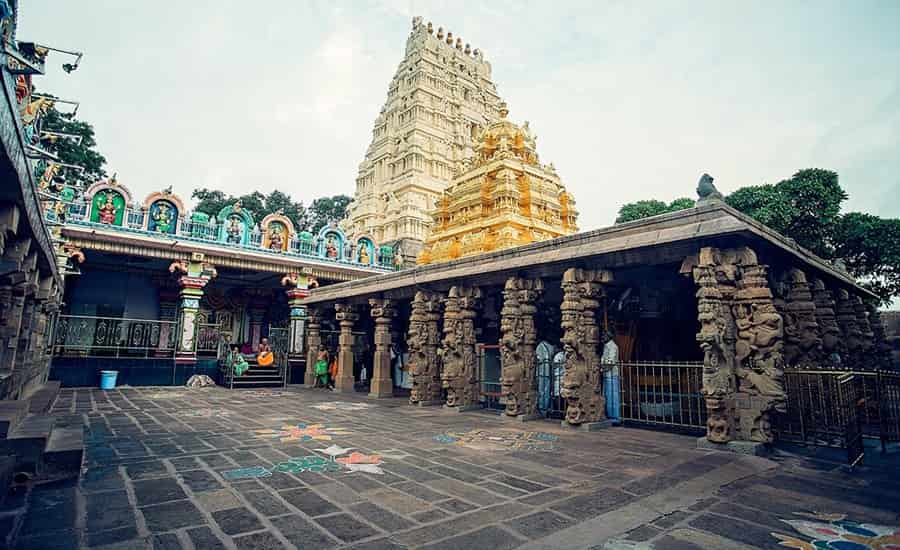
Location: Srisailam, Nallamala Hills
Known As: Kailash of the South
Notable Features:
- Situated atop Shri Saila Mountain
- Overlooks Krishna River
- Houses both Shiva and Bhramaramba (Parvati) deities
Visitor Information:
- Hours: 4:30 AM – 10 PM
- Darshan Times: 6:30 AM – 1 PM, 6:30 PM – 9 PM
- Best accessed through Markapur railway station
Historical Story:
The name “Mallikarjuna” comes from two divine lovers – Shiva and Parvati. When their son Kartikeya was disappointed about not getting married before Ganesha, he left for Kraunch Mountain. Shiva and Parvati followed him, settling here when they couldn’t find him. Shiva became known as Mallikarjuna (Lord White as Jasmine) and Parvati as Brahmaramba.
Interesting Facts:
- The temple complex houses over 50 sub-shrines
- It’s one of the few temples where the goddess is as prominent as Shiva
- The temple architecture shows influence of different dynasties including Chalukyas, Kakatiyas, and Vijayanagara
- Special ceremonies are performed during Mahashivaratri where the lingam is decorated with bilva leaves
3. Mahakaleshwar Temple (Madhya Pradesh)
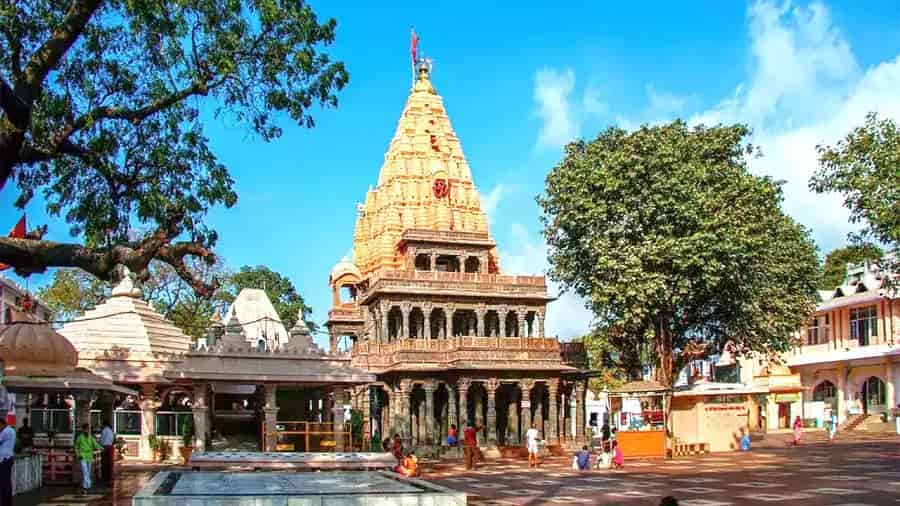
Location: Ujjain
Distinction: One of seven mukti-sthals in India
Special Features:
- Located in Mahakal forest
- Famous for unique Bhasma Aarti
- Situated on Rudra Sagar lake banks
Visitor Information:
- Hours: 4 AM – 11 PM
- Bhasma Aarti: 4 AM – 6 AM (advance booking recommended)
- Multiple darshan windows throughout day
- Accessible via Indore airport (51 km)
Historical Story:
A young boy named Shrikar was deeply devoted to Shiva. When demons threatened Ujjain, he prayed intensely, and Shiva emerged from the ground as Mahakaleshwar (Lord of Time) to protect the city. The unique Bhasma Aarti tradition began here, where ash from cremation grounds is used to anoint the lingam, symbolizing the ultimate reality of existence.
Interesting Facts:
- The lingam is believed to be swayambhu (self-manifested)
- It’s the only temple where the Bhasma Aarti ritual is performed
- The lingam faces south, which is unique among Jyotirlingas
- The temple has a unique time-keeping system based on traditional Hindu astronomy
4. Omkareshwar Temple (Madhya Pradesh)
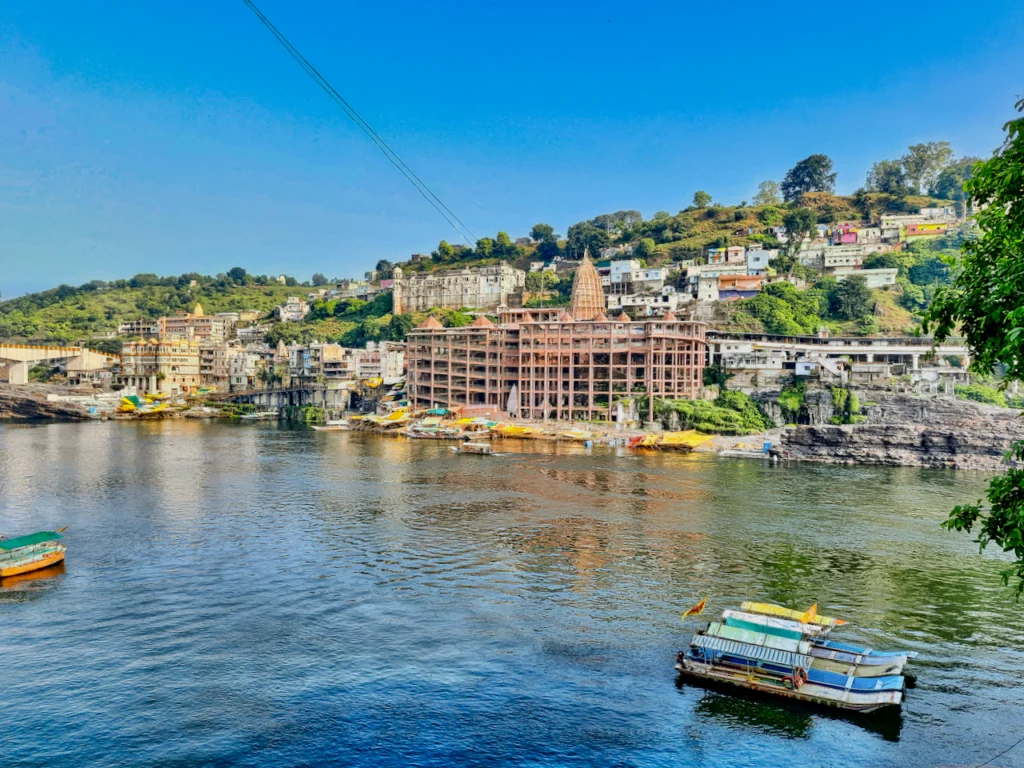
Location: Shivapuri Island, Narmada River
Unique Aspects:
- Temple shaped like Om symbol
- Island setting creates natural isolation
- Strong connection to Devas-Danavas war mythology
Visitor Information:
- Hours: 5 AM – 10 PM
- Darshan: 5:30 AM – 12:20 PM, 4 PM – 8:30 PM
- Transportation: 77 km from Indore
Historical Story:
The island’s shape naturally forms the Sanskrit symbol ‘Om’. According to legend, when the Vindhya mountains began growing uncontrollably due to ego, Sage Agastya came here to meditate. Lord Shiva appeared as Omkareshwar and blessed the sage with the power to humble the mountains.
Interesting Facts:
- The island has two ancient temples, representing Omkar and Amareshwar
- The river Narmada splits into two streams around the island, forming a perfect Om shape
- Ancient Sanskrit scriptures were composed here
- The temple shows both Nagara and Dravidian architectural styles
5. Vaidyanath Temple (Jharkhand)
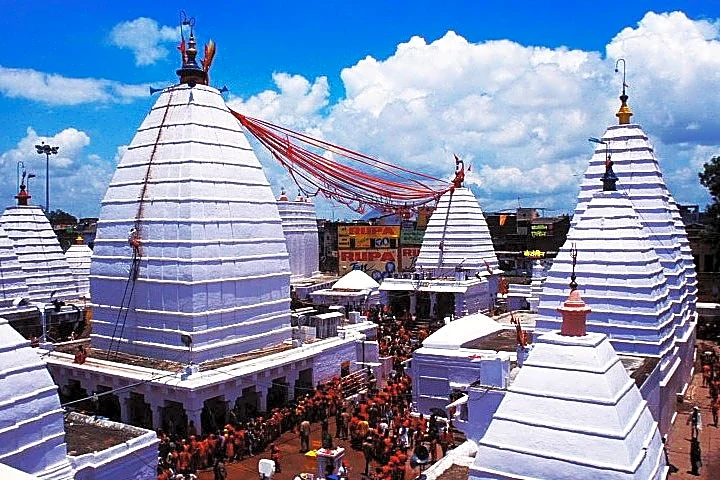
Location: Deoghar
Historical Significance: Associated with Ravana’s devotion
Notable Features:
- One of 52 Shakti Peethas
- Major pilgrimage site during Shravan month
Visitor Information:
- Hours: 4 AM – 3:30 PM, 6 PM – 9 PM
- Access via Jasidih Junction (15 km)
- Online booking available for quick darshan
Historical Story:
The most famous legend involves Ravana, who performed severe penance here. He offered his ten heads one by one to Shiva. Pleased with his devotion, Shiva restored his heads and gave him a powerful lingam. However, Shiva stipulated that the lingam would become permanently fixed wherever it was first placed on the ground.
Interesting Facts:
- During Shravan month, devotees carry water from the Ganges to offer here, walking hundreds of kilometers
- The temple complex contains mercury wells
- It’s believed that Ravana’s original lingam is still preserved here
- The temple has unique tantric significance
6. Bhimashankar Temple (Maharashtra)
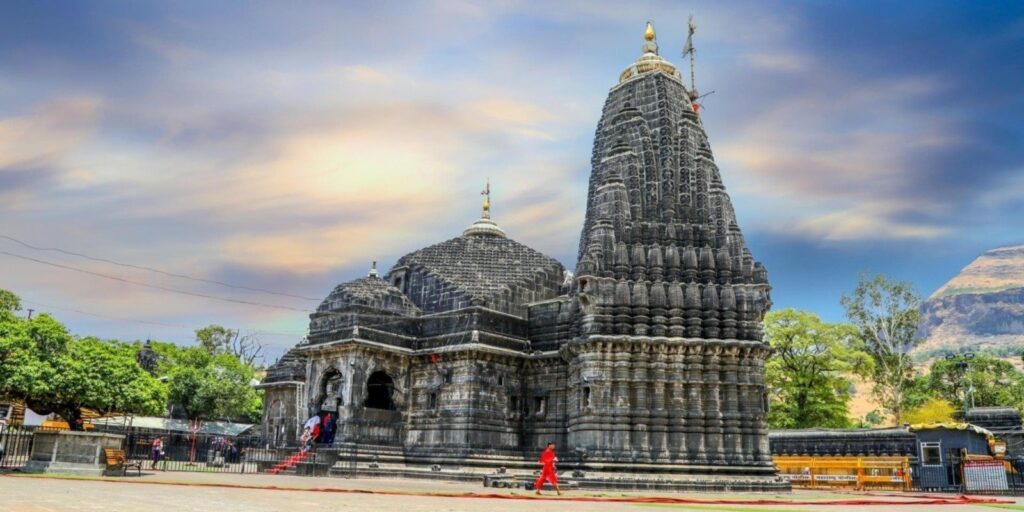
Location: Western Ghats, Pune region
Environmental Setting:
- Surrounded by wildlife sanctuary
- Black rock architecture
- Nagara architectural pattern
Visitor Information:
- Hours: 4:30 AM – 12 noon, 4 PM – 9:30 PM
- Special note: Closes briefly for Madhyan Aarti
- Best accessed from Karjat railway station
Historical Story:
The temple is associated with the story of Bhima, a demon who gained immense power through penance. He began terrorizing the three worlds, leading to the gods seeking Shiva’s help. Shiva defeated Bhima in battle, and at the demon’s dying request, named the place Bhimashankar.
Interesting Facts:
- The temple is surrounded by dense forests home to rare species including the Giant Indian Squirrel
- The temple’s water tank is believed to be created from Shiva’s sweat
- Ancient rock carvings in the temple depict scenes from Ramayana and Mahabharata
- The temple is an important biodiversity hotspot
7. Rameshwaram Temple (Tamil Nadu)
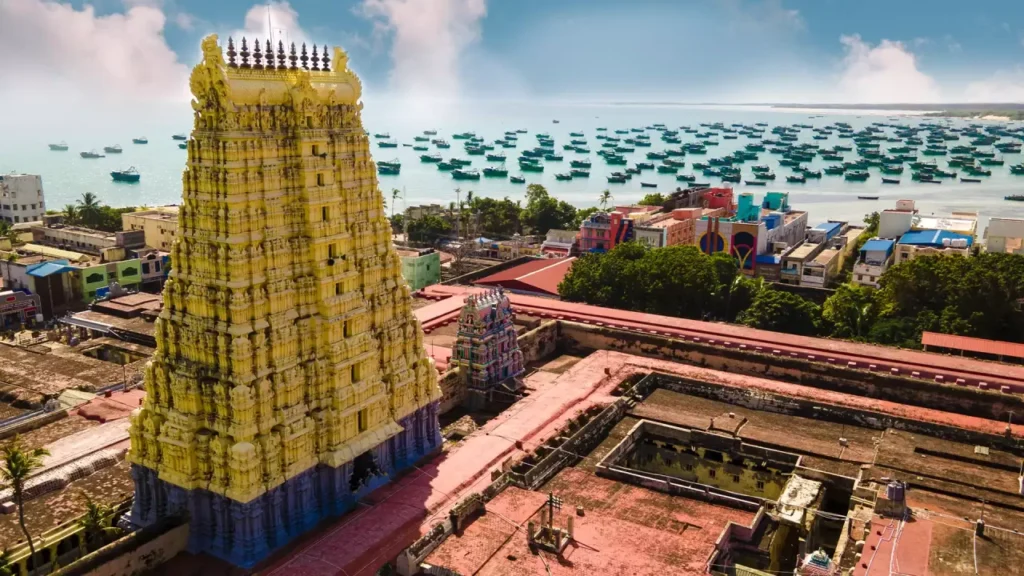
Location: Rameswaram Island
Distinction: Known as Varanasi of the South
Architectural Highlights:
- Longest temple corridor in India
- 36 theerthams (holy water bodies)
- Strong connection to Ramayana
Visitor Information:
- Hours: 5 AM – 1 PM, 3 PM – 9 PM
- Located 163 km from Madurai airport
- Well-connected by rail
Historical Story:
After defeating Ravana, Lord Rama wanted to absolve himself of the sin of brahmahathya (killing a Brahmin, as Ravana was a learned scholar). He installed a lingam here, which was made by Sita from sand. When the lingam sent by Hanuman from Kailash arrived late, Rama installed it too, and it became known as Kaashi Vishwanath.
Interesting Facts:
- The temple has the longest corridor among all Hindu temples worldwide
- It’s believed that both Shiva and Rama worshipped here
- The temple’s 22 wells have water with different tastes
- The third corridor is the longest pillared corridor in the world
8. Nageshwar Temple (Gujarat)
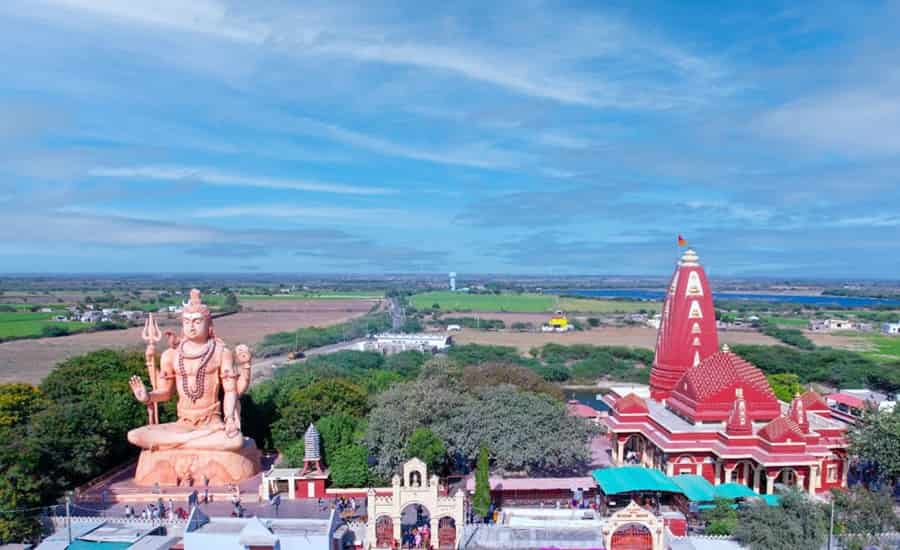
Location: Daarukavanam, near Dwarka
Notable Features:
- 25-meter tall Shiva statue
- Coastal location with Arabian Sea views
- Associated with demon Daruka mythology
Visitor Information:
- Hours: 5 AM – 9 PM
- Darshan: 6 AM – 12:30 PM, 5 PM – 9 PM
- Accessible via Dwarka station
Historical Story:
A demon named Daruka imprisoned a Shiva devotee named Supriya. Through her devotion and singing of Shiva’s praise, all the prisoners were freed and the demon was defeated when Shiva appeared as Nageshwar. The place was earlier a forest of Daruka trees, hence called Darukavan.
Interesting Facts:
- It houses one of the largest Shiva statues in the world
- The lingam here faces south
- The temple complex includes a cave where Supriya is believed to have meditated
- Ancient manuscripts mention this site as being submerged under sea at one point
9. Kashi Vishwanath Temple (Varanasi)
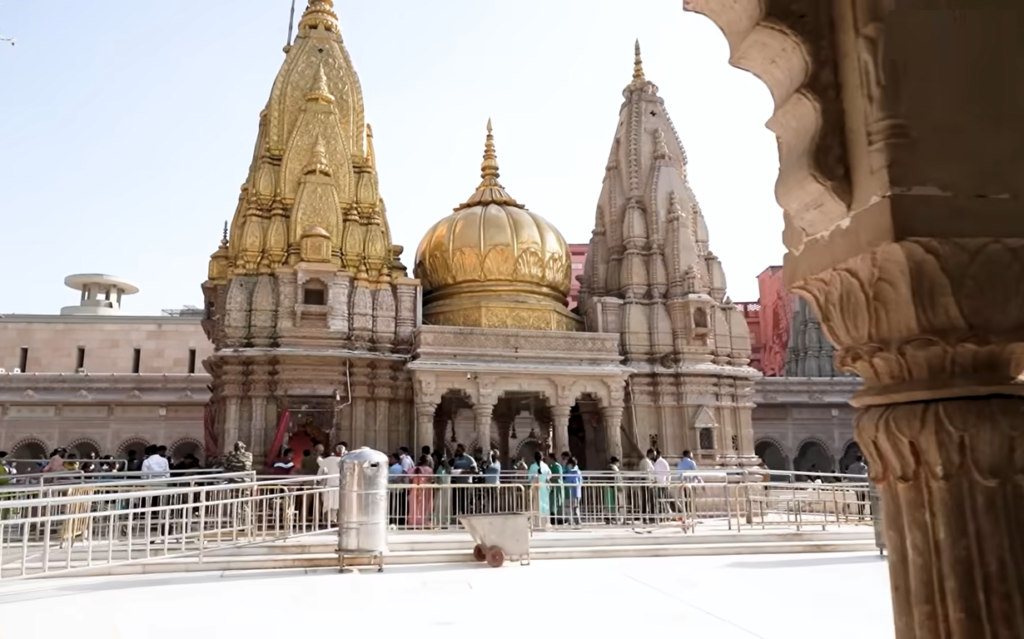
Location: Varanasi, Uttar Pradesh
Significance: Heart of spiritual Varanasi
Features:
- Gold-plated dome
- Riverfront location on Ganges
- Ancient architectural elements
Visitor Information:
- Hours: 2:30 AM – 11 PM
- Multiple aartis throughout day
- Excellent rail connectivity
Historical Story:
According to legend, when Brahma and Vishnu were arguing about supremacy, Shiva appeared as an infinite pillar of light. Its base was searched for by Vishnu as a boar, while Brahma falsely claimed to have found its top. This jyotirlinga represents the supreme reality of existence.
Interesting Facts:
- The temple receives around 1 million visitors annually
- The current structure dates to 1780, built by Ahilyabai Holkar
- The temple holds 800 kg of gold plating on its towers
- The Gyanvapi Mosque shares a wall with the temple complex
10. Trimbakeshwar Temple (Maharashtra)
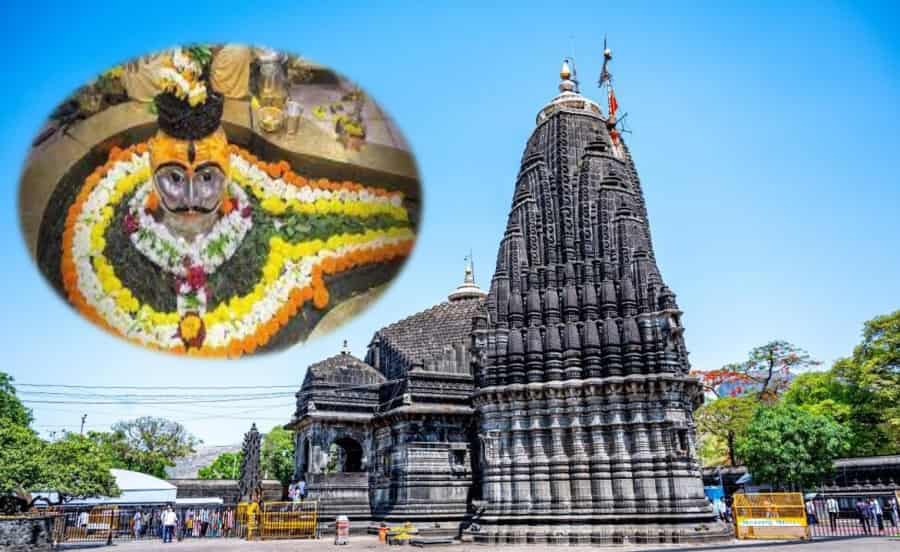
Location: Nashik
Unique Aspects:
- Three-faced linga representing Trinity
- Located near Godavari River source
- Ancient architectural significance
Visitor Information:
- Hours: 5:30 AM – 9 PM
- Accessible via Igatpuri station
- Regular transport from Nashik
Historical Story:
The unique three-faced lingam represents Brahma, Vishnu, and Shiva. According to legend, Godavari River (personified as Gautami) flows here due to Sage Gautama’s penance. The sage had to perform elaborate rituals to purify himself after inadvertently causing the death of a cow.
Interesting Facts:
- The temple is built from black stone in the Nagara style
- The crowning jewel was allegedly stolen by the British
- The lingam is covered by a silver mask with three faces
- Water continuously drips on the lingam from the ceiling
11. Kedarnath Temple (Uttarakhand)
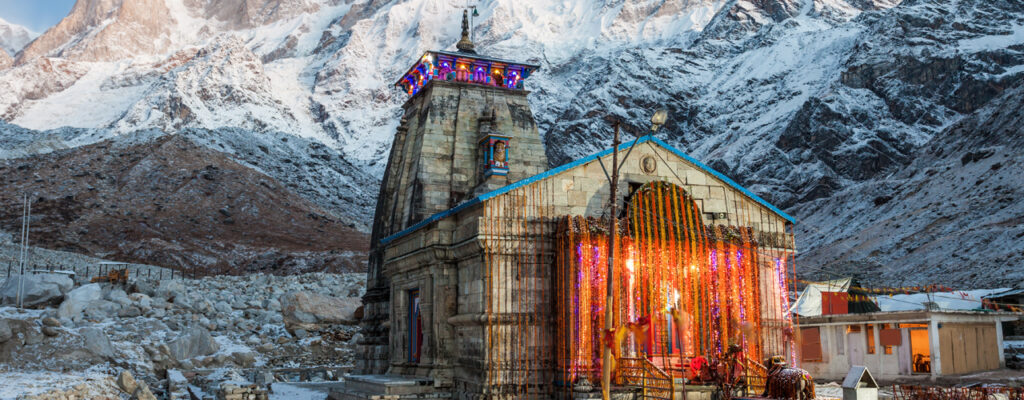
Location: Rudra Himalayan Range
Altitude: 1,200 feet
Special Notes:
- Open only May-October
- Associated with Pandavas
- Highest located Jyotirlinga
Visitor Information:
- Hours: 4 AM – 12 noon, 3 PM – 9 PM
- Requires trek from Gaurikund
- Helicopter services available
Historical Story:
After the Kurukshetra war, the Pandavas sought Shiva’s blessings to atone for killing their kin. Shiva kept eluding them, finally taking the form of a bull at Kedarnath. When Bhima recognized him, Shiva dove into the ground, leaving his hump on the surface. This hump is worshipped as the lingam.
Interesting Facts:
- The temple survived the devastating 2013 floods
- The first temple is believed to have been built by the Pandavas
- It’s the highest located jyotirlinga at 3,583 meters
- The temple opens only six months a year due to extreme weather
12. Grishneshwar Temple (Maharashtra)
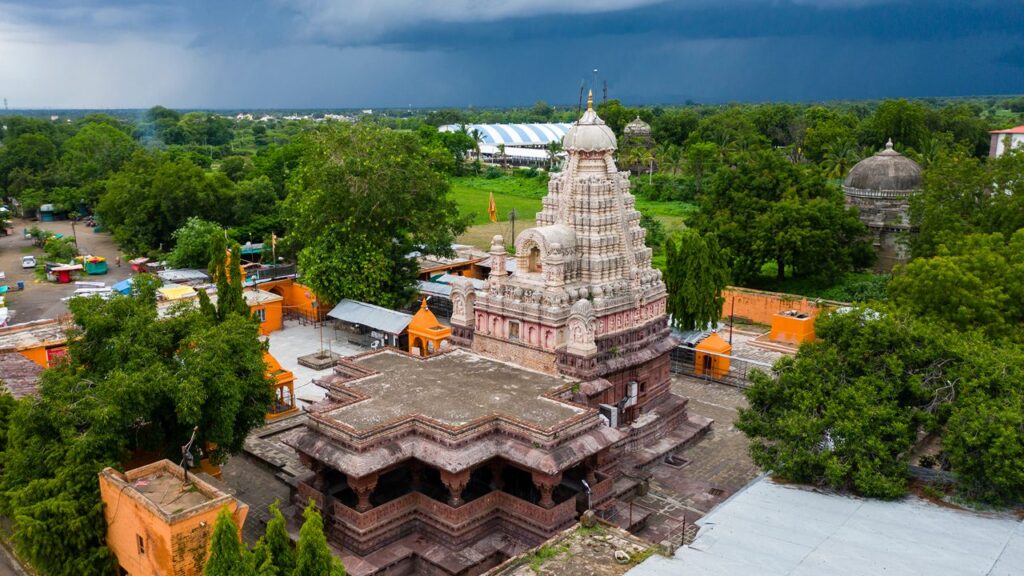
Location: Near Aurangabad
Notable Features:
- Proximity to Ellora Caves
- Red rock architecture
- Intricate sculptural work
Visitor Information:
- Hours: 5:30 AM – 9:30 PM
- 30 km from Aurangabad
- Extended hours during festivals
Historical Story:
A devout woman named Kusuma regularly made lingams from clay to worship Shiva. Her husband’s second wife, jealous of her devotion, killed Kusuma’s son. Through her continued devotion and prayers, Shiva restored her son’s life and appeared here as Ghrushneshwar.
Interesting Facts:
- It’s the smallest of the 12 jyotirlingas
- The temple was the last to be built among the 12 jyotirlingas
- The temple walls feature intricate carvings depicting various scenes from the Shivapurana
- It’s one of the few temples that allow women to pour abhisheka water on the lingam
Planning Your Pilgrimage
Efficient Route Planning
Seven Jyotirlingas can be visited in one circuit:
- Somnath and Nageshwar (Gujarat)
- Trimbakeshwar, Bhimashankar, and Grishneshwar (Maharashtra)
- Mahakaleshwar and Omkareshwar (Madhya Pradesh)
Essential Travel Tips
- Weather Considerations:
- Check seasonal accessibility
- Plan around monsoon for mountain temples
- Consider local festivals and peak seasons
- Accommodation:
- Book in advance during religious festivals
- Consider dharamshalas for authentic experience
- Check for temple-operated guest houses
- Transportation:
- Combine rail and road transport
- Consider helicopter services for Kedarnath
- Use local transport for last-mile connectivity
- Spiritual Preparations:
- Research temple protocols
- Carry appropriate attire
- Learn about specific rituals and offerings
- Documentation:
- Carry valid ID proof
- Keep emergency contacts
- Download temple maps and guides
Conclusion
The journey to the 12 Jyotirlingas is not just a religious pilgrimage but a profound exploration of India’s spiritual heritage. Each temple offers unique architectural, historical, and spiritual experiences, making the complete circuit an enriching journey through India’s cultural landscape. Whether undertaken for religious devotion or cultural exploration, visiting these sites provides deep insights into India’s spiritual traditions and architectural magnificence.
